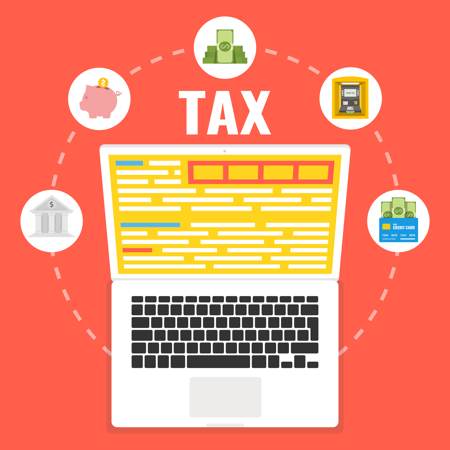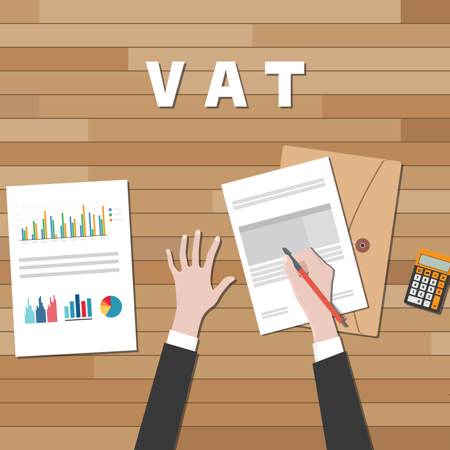Making Tax Digital pilot is now open to all self-employed UK taxpayers
 Join the government’s pilot and start sending regular income tax updates through HMRC’s Making Tax Digital system, if you’re self-employed.
Join the government’s pilot and start sending regular income tax updates through HMRC’s Making Tax Digital system, if you’re self-employed.
The tax authority’s Making Tax Digital (MTD) system will be rolled out in 2020, and last year a limited pilot program was launched to test the new digital system that will require businesses to report taxes digitally. The pilot has now been extended to all self-employed taxpayers in the UK. This means if you’re a sole trader with income from one business and your current accounting period ends after 5 April 2018, you can volunteer to file your income tax updates to HMRC digitally via the compliant software providers supporting the pilot. The pilot is also said to open up next month to unincorporated landlords.
What software can self-employed UK taxpayers use for the pilot?
HMRC’s list of software providers at the time of writing only contains two entries – IRIS and Rhino, but further accounting software companies are expected to appear on the list as the pilot progresses. Compliant software allows digital record keeping of income and expenses, sending quarterly updates to HMRC and viewing tax estimates from HMRC regarding the tax you owe. This is based on the updates provided by the software.
If you are using different software for your accounting, it may still be possible to pull client information directly from that software into IRIS and RHINO, but you will need to check with your software provider whether they have a partnership in place.
Why join the pilot?
MTD is coming into force eventually, and by signing up now you can not only help the government test this new tax service, but it’s also a chance to get comfortable with the new system yourself.
If your only source of income is through your jobs as a self-employed individual, by signing up to the pilot, you will not need to worry about filing a Self Assessment tax return at the end of the year. Instead, you’ll see the taxes owed in real time as the year progresses.
You can sign up for the pilot using your Government Gateway user ID and password, which is the same one you use for the Self Assessment online service.
Sending MTD updates using your accountant
As accountants for small business owners, we’ve been providing MTD transition support to small businesses in London since the rollout of the pilot scheme last year, and are happy to extend our services to the self-employed. Integrating IT systems can be challenging and time-consuming and without IT support, you may struggle with HMRC’s accounting software. We understand this at Tax Agility and also know that dealing with new and unfamiliar software adds extra work to your day. We work with XERO, a cloud-based accounting software, to prepare our clients of all sizes for a smooth transition.
Give us a call on 020 8108 0090 today to hear more about how our small business accountants at Tax Agility can help you.
Spring Statement: Businesses encouraged to complete VAT threshold survey
 Last week Chancellor Philip Hammond delivered the 2018 Spring Statement to the House of Commons and announced a call for evidence to explore the effect of the VAT threshold on small businesses. So if you’re running a small business, the Treasury wants to hear from you about how the current VAT threshold affects you, and how they could change its design to encourage your business to grow.
Last week Chancellor Philip Hammond delivered the 2018 Spring Statement to the House of Commons and announced a call for evidence to explore the effect of the VAT threshold on small businesses. So if you’re running a small business, the Treasury wants to hear from you about how the current VAT threshold affects you, and how they could change its design to encourage your business to grow.
What’s the VAT threshold?
Currently, you must register for VAT if your taxable turnover is over £85,000. This is known as the VAT threshold. The UK level is one of the highest globally: the average in the EU being £20,000. During the Autumn Budget announcement in 2017, the Chancellor announced that the government will freeze the threshold until spring 2020 but that reducing the level to the global norm is under consideration. This act would bring tens of thousands of small businesses into the tax net.
What does the VAT threshold survey want to know?
The consultation intends to find evidence to support or refute the idea that the VAT threshold is putting pressure on small businesses.
A report from the Office of Tax Simplification (OTS) last year voiced concern that the threshold restricts small business growth. Businesses, it stated, try to keep their turnover just below the level in order to avoid VAT liability. The OTS has suggested that the government could implement a “smoothing mechanism” to help businesses over the threshold.
Hammond wants to explore whether the VAT threshold discourages expansion, and what the Treasury can do to design it in a way so it improves small business productivity rather than hindering it.
How to fill out the survey
The survey asking questions around the VAT threshold is open until 5 June and takes around seven minutes to complete. The results are anonymous and will help the government design any future changes to the VAT threshold. You can access the survey here.
The consultation has been welcomed by various institutions, including the Chartered Institute of Taxation and The Association of Taxation Technicians. At Tax Agility, we also encourage small businesses to complete the survey.
Meeting your VAT responsibilities with Tax Agility
Meeting your VAT responsibilities is important. Tax Agility offers a no-obligation and free first consultation to understand your VAT situation, before we recommend an accounting solution tailored to your needs.
Looking for a chartered accountant in Richmond, Putney or Cavendish Square? We have offices that are local to your business and offer a range of VAT services that can help make life easier for you, including:
- Advice on the best VAT strategy for your business
- VAT registration assistance
- Assistance with the preparation of quarterly returns
- Providing VAT advice for complex financial transactions
- Investigation of VAT assessments
- VAT control and reconciliation
Call us on 020 8108 0090 today.
Understanding IR35 – Are you a disguised employee?
A growing number of professionals in the UK are transitioning from full-time employment to contracting – are they at risk of being misclassified? In this post, we take a look at disguised employment and what happens when your contract falls under the scope of IR35.
 In 2009 TV presenter Christa Ackroyd took the advice of her employer BBC and set up a personal service company, changing her status from direct employee to that of a contractor. This was supposed to be a win-win arrangement for both parties with the BBC no longer needing to pay income tax and national insurance contributions for Christa, while she could enjoy greater flexibility and numerous tax breaks as a self-employed contractor.
In 2009 TV presenter Christa Ackroyd took the advice of her employer BBC and set up a personal service company, changing her status from direct employee to that of a contractor. This was supposed to be a win-win arrangement for both parties with the BBC no longer needing to pay income tax and national insurance contributions for Christa, while she could enjoy greater flexibility and numerous tax breaks as a self-employed contractor.
Fast forward to 2018, when after a five-year dispute with HMRC over the nature of her contract, the tax authority is demanding £419,151 from Christa for the taxes she failed to pay. According to the tax authority, her contract fell under the scope of IR35, meaning she was not entitled to claim for the expenses as a contractor and should now pay up. She’s not alone in this. According to The Guardian, further BBC presenters could be facing backdated tax bills for disguised employment.
If you’re shaking your head thinking BBC is to blame here, consider the story of Gary Smith, a London-based engineer who brought a series of claims against Pimlico Plumbers. Although he worked for the company as an independent contractor, he argued he was entitled to employee rights due to the nature of his work and contract, which set minimum working hours and required him to use a company van. The employment tribunal agreed that he’s under the scope of IR35 and Pimlico Plumbers is now appealing to the Supreme Court against the decision.
What’s the “gig economy”?
The above cases are becoming all too common in the so-called “gig economy” – a phrase increasingly in use to mean a freelance economy based on people working a variety of small jobs to support themselves instead of working under permanent employment. On the one hand, it’s regarded as an arrangement offering flexibility like in the case of Christa Ackroyd, but it can become a form of exploitation with the lack of workplace protection in place, as suggested by the Pimlico Plumbers case. Either way, the gig economy is causing confusion to contractors with regards to where they stand when it comes to IR35.
When does a self-employed contractor become an employee?
IR35 is a legislative act enforced by HMRC, which applies to people that work for a client through an intermediary, such as a limited company. Essentially, HMRC wants to ensure that only genuine contractors benefit from the tax savings associated with this type of employment. If you go into a contract that identifies you as an employee of the client rather than an employee of your own limited company, the IR35 rules will then apply to you. If this is the case, you can expect to pay around 25% more in tax every year.
If you’re not sure whether you’re a contractor or an employee, consider the following points:
- Who are you replacing? If your predecessor was an employee, it might mean you are one too.
- Who is in control of your working conditions? If your contract is restrictive (e.g. defines working hours and holidays), IR35 might classify you as an employee. As a contractor, you should be in control.
- Does your contract mention substitution? As a contractor, you can send a substitute to replace you if you’re unable to work. If your contract doesn’t include a clause on substitution, it might mean you’re an employee in disguise.
- How are you paid? If you’re paid like all other employees at the end of each month, that can also be a sign that your contract falls inside IR35. Contractors tend to get paid at the end of their services or in instalments depending on the nature of their projects.
How to check if someone is self-employed
There are numerous IR35 evaluation tools and tests out there but relying on online IR35 advice is risky as failure to address the criteria properly will put you at risk of tax avoidance.
To make sure your contract passes IR35, the most sensible thing to do is to talk to accountants for contractors like Tax Agility before you set up your company and sign your contract. If you’re already providing services as self-employed but are under the impression you could be a disguised employee, we can also help you disperse or confirm your suspicions.
Contact one of our expert IR35 contractor accountants today on 020 8108 0090.
